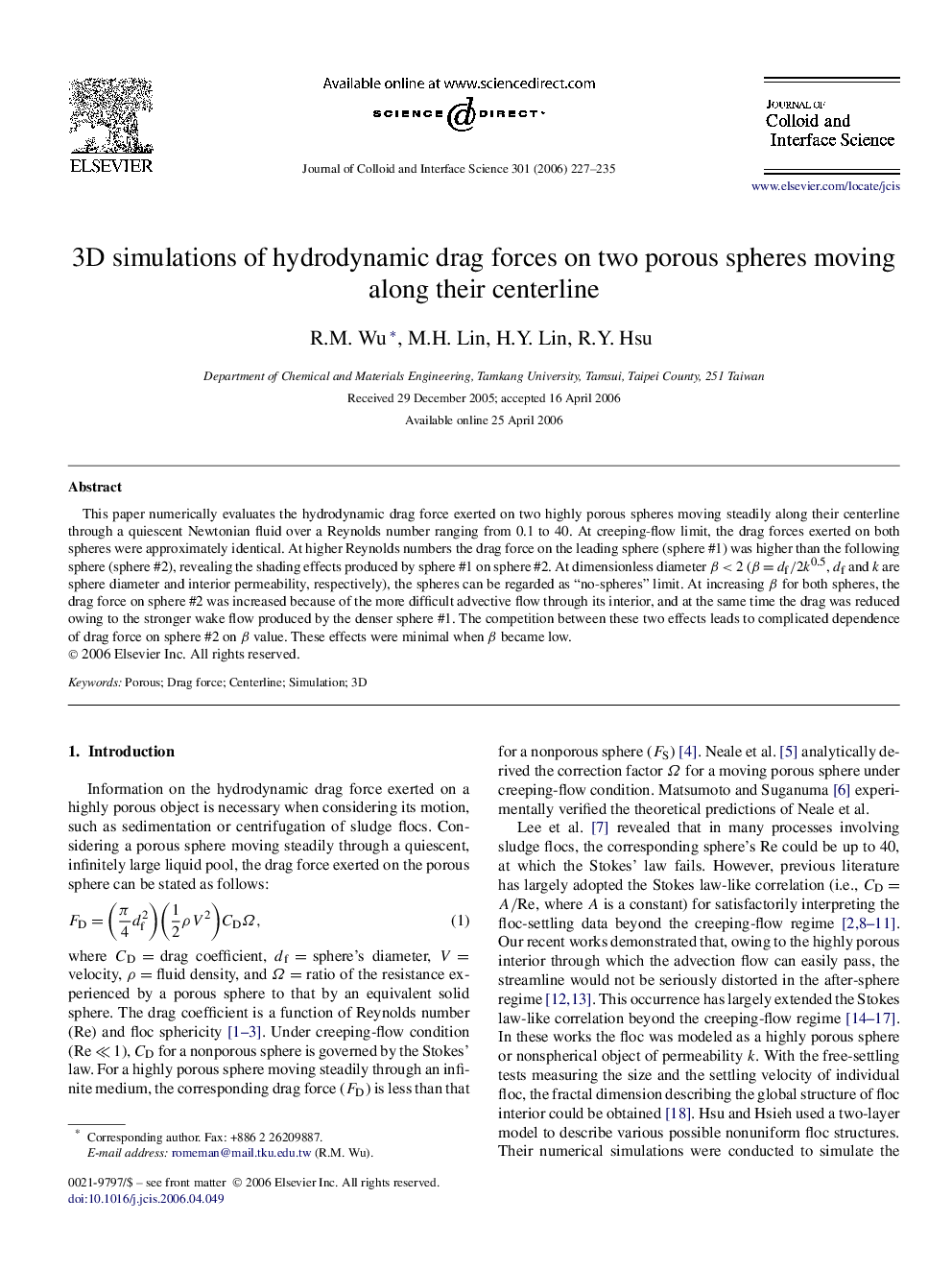| Article ID | Journal | Published Year | Pages | File Type |
|---|---|---|---|---|
| 612730 | Journal of Colloid and Interface Science | 2006 | 9 Pages |
This paper numerically evaluates the hydrodynamic drag force exerted on two highly porous spheres moving steadily along their centerline through a quiescent Newtonian fluid over a Reynolds number ranging from 0.1 to 40. At creeping-flow limit, the drag forces exerted on both spheres were approximately identical. At higher Reynolds numbers the drag force on the leading sphere (sphere #1) was higher than the following sphere (sphere #2), revealing the shading effects produced by sphere #1 on sphere #2. At dimensionless diameter β<2β<2 (β=df/2k0.5β=df/2k0.5, dfdf and k are sphere diameter and interior permeability, respectively), the spheres can be regarded as “no-spheres” limit. At increasing β for both spheres, the drag force on sphere #2 was increased because of the more difficult advective flow through its interior, and at the same time the drag was reduced owing to the stronger wake flow produced by the denser sphere #1. The competition between these two effects leads to complicated dependence of drag force on sphere #2 on β value. These effects were minimal when β became low.
Graphical abstractInformation on the hydrodynamic drag force exerted on a highly porous object is necessary when considering its motion, such as sedimentation or centrifugation of sludge flocs. This paper numerically evaluates the hydrodynamic drag force exerted on two highly porous spheres moving steadily along their centerline through a quiescent Newtonian fluid over a Reynolds number ranging from 0.1 to 40. By 3D simulation, the interaction between two nonhomogeneous porous spheres could be discussed.Figure optionsDownload full-size imageDownload as PowerPoint slide
